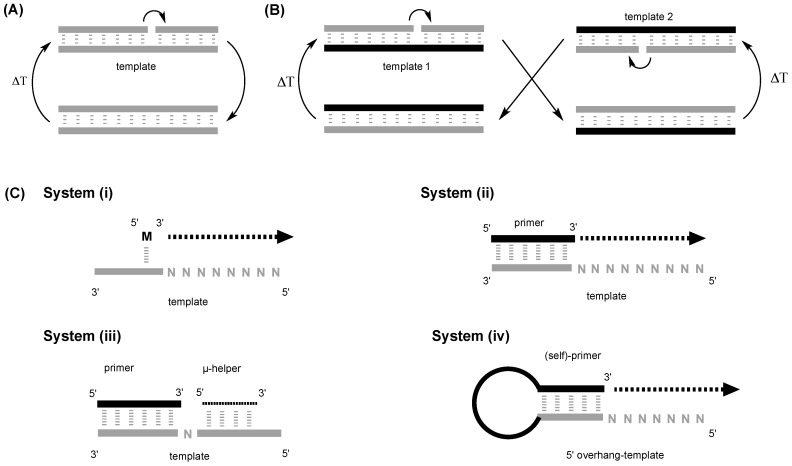Figure 2.
Template-directed polymerizations. (A) Self-replication versus (B) cross-replication. Self-replication was the first successful replication reported [21] and is based on the fact that the copying of a template sequence leads to its direct amplification. Cross-replication of nucleic acids is similar to biological information replication: a template sequence is first copied given a RNA fragment that is complementary to the original sequence. This new fragment can then act as a template and be itself copied, yielding the original sequence. (C) Schematic representation of the various systems used in the exploration of template-directed (TD) polymerization (N denotes a templating residue on the template): (i) monomer/template. In this system, monomers have to associate, and they will condense in the 5′ to 3′ direction (arrow); (ii) primer/template/monomer. The primer and the template hybridize and the monomers will associate with the template while stacking at the end of the primer. They will condense in the 5′ to 3′ direction (arrow) (iii) primer/template/monomer and micro-helper oligomers. In this situation, only one monomer can be added at a time, and the micro-helper has to be exchanged for a new round of polymerization to start; and (iv) hairpins. The 5′-end of the hairpin is the templating sequence and the 3′-end the primer. The length of the stem in the number of base pairs will determine the strength of hybridization. The condensation will occur as described for System (ii).

